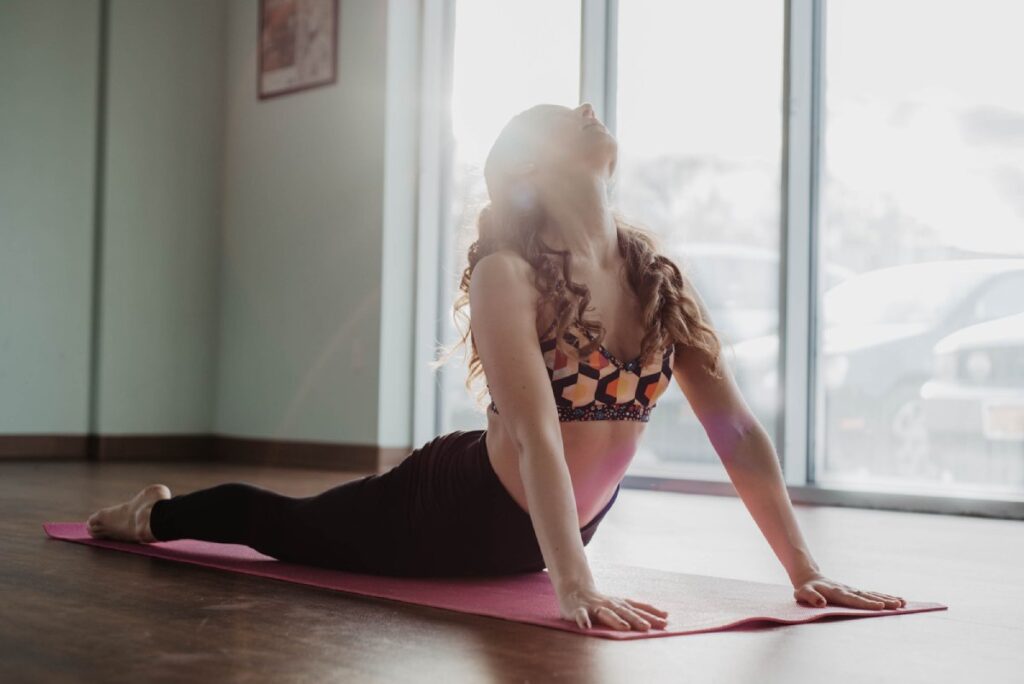Are you interested by making an attempt Ashtanga yoga however fear this yoga model might be too troublesome?
There’s no denying that Ashtanga is a difficult apply with many superior poses requiring excessive flexibility. Nonetheless, this doesn’t imply you have to be tremendous flexible to change into an “Ashtangi.”
The apply is designed that will help you progress steadily as you repeatably apply the identical asanas. With each class, you’ll change into stronger and extra versatile, whereas enhancing your focus, self-discipline, and steadiness.
So why not give it go? Learn on for a full record of the Ashtanga yoga poses discovered within the first sequence and my tried and examined ideas for studying the sequence.
What Is Ashtanga Vinyasa Yoga And Why Ought to You Do It?
Ashtanga yoga was developed by Okay. Pattabhi Jois in 1932. It’s primarily based on the standard eightfold path (eight limbs of yoga), detailed in Patanjali’s sacred scriptures, the “Yoga Sutras.”
The Ashtanga Yoga Analysis Institute of Mysore was based in 1948, and since then, this yoga model has change into more and more fashionable.
One purpose for its reputation is its disciplined model. Historically, you might be purported to apply yoga 6 days every week, following a set sequence. Thus, in each Ashtanga class, you’ll do the identical poses in the identical sample.
Ashtanga yoga is a bodily demanding and difficult apply, glorious for constructing energy and adaptability. Whereas holding every pose for five breaths, you apply the Ujjayi pranayama, which helps to construct inner warmth and stop fatigue.
Thus, this model of yoga will make you are feeling robust and energized whereas enhancing your physique consciousness and breath management.
Ashtanga Yoga Main Sequence
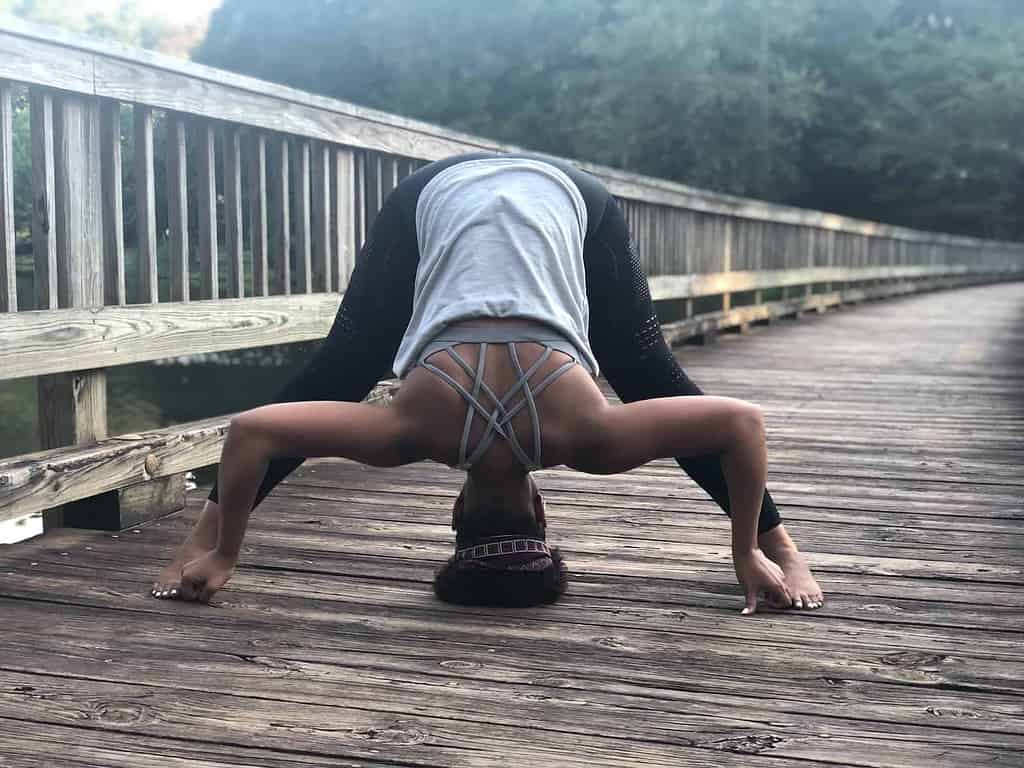
In conventional Ashtanga yoga apply, there are 4 completely different set sequences. Nonetheless, everybody begins on the first sequence and continues working towards it till they’ve mastered each pose – actually! Solely then can an “Ashtangi” proceed to the intermediate sequence.
Within the major sequence, there are round 50 asanas (excluding the solar salutation sequence carried out originally of the category). Nonetheless, some poses, corresponding to Marichyasana, have a number of variations.
Here’s a full record of asanas within the major sequence of Ashtanga yoga, proven within the order they’re meant to be practiced.
Heat up sequence
An Ashtanga class begins in Tadasana, the standing place. Then, relying on the yoga instructor, you would possibly first chant the opening mantra or deliver your arms to the prayer place for an Om.
You’ll then carry out 5 rounds of Surya Namaskar A and B. These dynamic sequences assist to heat up all of the muscle tissue within the physique and calm the thoughts. As you hyperlink every breath to every motion, you change into centered and targeted for the remainder of the apply.
Surya Namaskar A

- Solar salutation A begins by standing tall in Tadasana.
- Inhale to achieve your arms overhead to upward arms.
- Exhale to fold ahead into Uttanasana.
- Inhale to midway elevate. Straighten the legs and look ahead with the fingers on the bottom or shins.
- Exhale to bend the knees and step or leap again to 4 limbed employees pose (Chaturanga).
- Inhale to an upward-facing canine, straightening the arms, arching the again, and urgent the chest forwards.
- Exhale to push the hips again and up right into a downward-facing canine. Legs and arms straight and chest urgent in direction of the thighs.
- Maintain right here for five breaths, then in your inhale, step or leap ahead to midway elevate.
- Exhale to Uttanasana.
- Inhale to upward arms.
- Exhale to tadasana to finish the primary spherical, then repeat 4 extra instances.
Surya Namaskar B
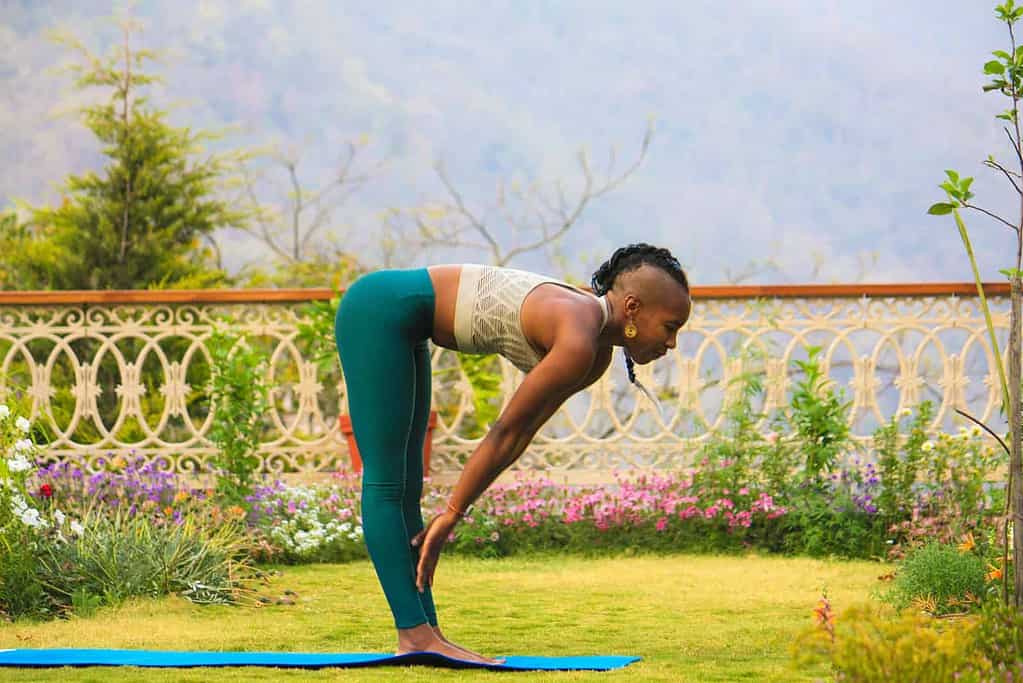
Solar salutation B is just like variation A however with some extra postures.
- Solar salutation B is just like variation A however with some extra postures.
- From Tadasana, inhale to Chair Pose, bending your knees and sinking your hips whereas reaching your arms alongside your ears
- Exhale to fold ahead into Uttanasana.
- Inhale to midway elevate.
- Exhale to step or leap again to the four-limbed employees pose (Chaturanga).
- Inhale to an upward-facing canine.
- Exhale to a downward-facing canine.
- Inhale to step your proper foot between the arms and rise to Warrior 1. Bend the entrance knee, hold your hips ahead, and attain your arms as much as the ceiling.
- Exhale to launch the arms to the mat and step again to plank for Chaturanga.
- Inhale to an upward-facing canine.
- Exhale to a downward-facing canine.
- Inhale to step your left foot between the arms for Warrior 1 on this facet.
- Exhale to Chaturanga.
- Inhale to an upward-facing canine.
- Exhale to a downward-facing canine. Maintain right here for five breaths.
- Inhale to midway elevate.
- Exhale to Uttanasana.
- Inhale to the chair pose.
- Exhale to tadasana to finish the primary spherical, then repeat 4 extra instances.
Ashtanga Standing Sequence
After the solar salutations, you progress to the standing sequence of Ashtanga Yoga. Observe that a few of the tougher standing yoga poses could also be omitted if doing a beginner-level or open class model.
All standing poses are usually held for five breaths.
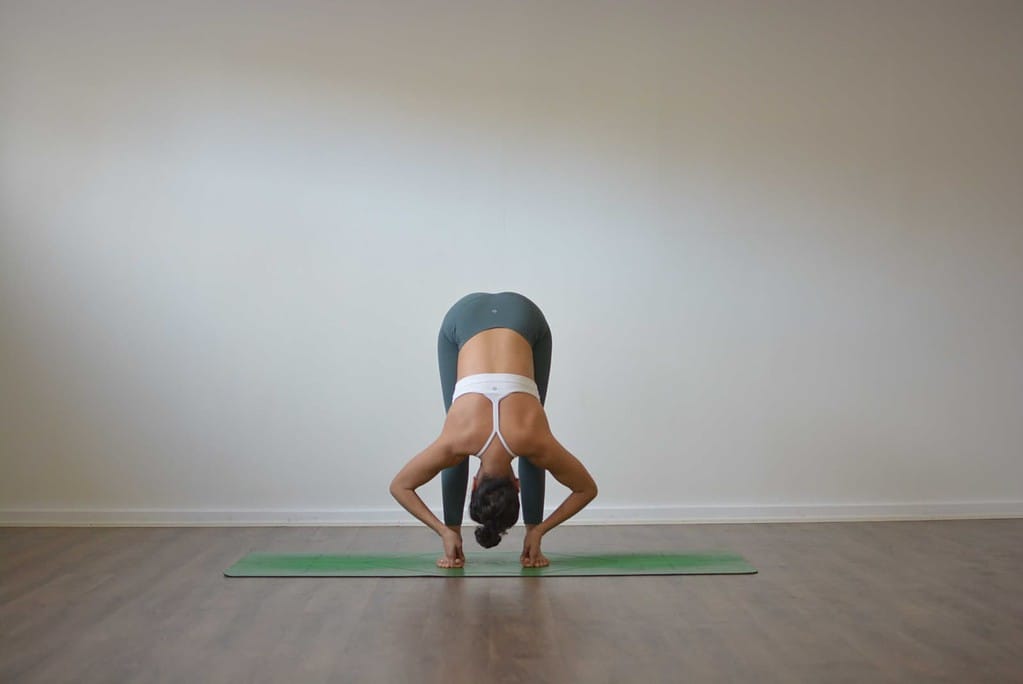
Padangusthasana – The standing sequence begins with two ahead folds; the primary is the hand-to-big-toe ahead fold. Seize your huge toes together with your peace fingers and gently pull your torso in direction of your thighs.
Pada Hastasana – Place your arms beneath your ft for a deeper spinal flexion on this ahead fold variation.
Trikonasana – That is the traditional prolonged triangle pose, which provides an intense stretch to the facet physique. Purpose to deliver your hand to the bottom or a yoga block as you attain the other arm to the ceiling and open the chest.
Parivrtta Trikonasana – The revolved triangle pose offers a deep stretch to the backbone, opens the guts, and improves steadiness.
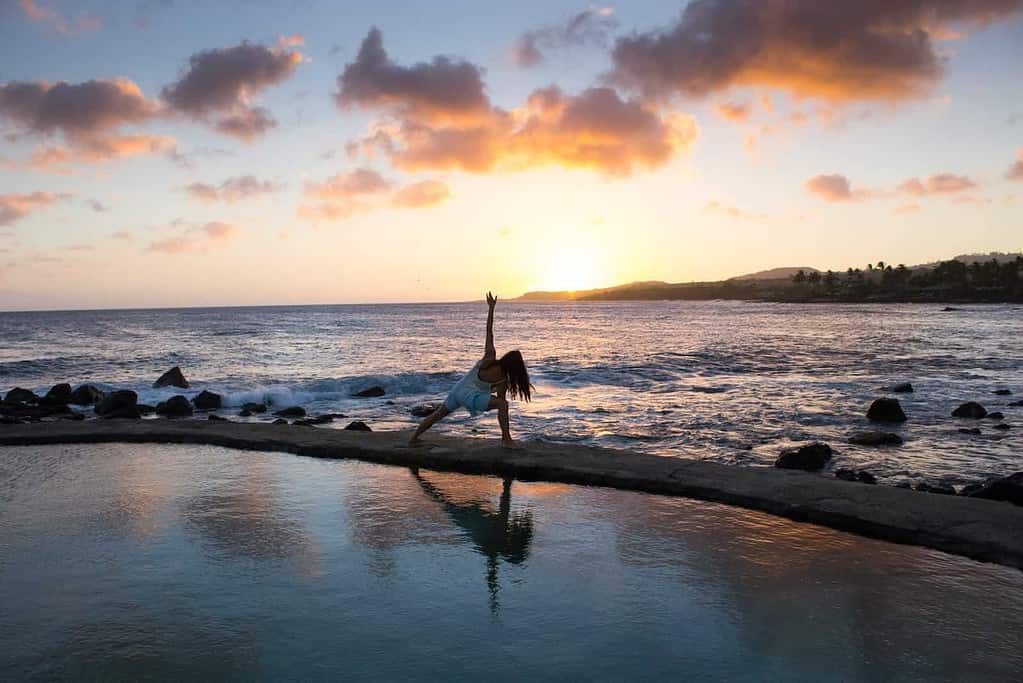
Utthita Parsvakonasana – The prolonged facet angle offers a facet stretch just like in triangle pose. Nonetheless, you bend the entrance knee for a deeper hip stretch.
Parivrtta Parsvakonasana – The revolved facet angle pose options the identical leg positioning of the earlier posture, however the higher physique twists in direction of the entrance knee somewhat than away from it.
Prasarita Padottanasana A, B, C, D – Within the traditional wide-leg ahead fold, you fold between the legs. There are 4 variations of this; the arms on the ground with the elbows bent, the arms on the hips, arms clasped behind the again for a shoulder stretch, and peace fingers beneath the massive toes.

Parsvottanasana – Pyramid pose is a ahead bend the place you stretch over the entrance leg, giving a deep hamstring stretch.
Utthita Hasta Padangusthasana A, B, C – Prolonged hand to huge toe pose combines a steadiness with a deep hamstring stretch. Variation A is holding the foot straight in entrance of your physique with a straight backbone. Variation B is opening the leg to the facet, and variation C is letting go of the leg (straight in entrance of you) however preserving it lifted.
Ardha Baddha Padma Uttanasana – On this steadiness pose, often known as the half-bound lotus intense stretch, you place the heel of 1 foot within the reverse groin (like within the half lotus). You then fold forwards and place one hand on the ground.
Utkatasana – Apply chair pose (as carried out in solar salutation b).

Virabhadrasana I – Transfer onto the traditional warrior 1 pose, with the entrance knee bent and again leg straight. The rear toes needs to be pointed at a 45-degree angle whereas the entrance toes face ahead. Make sure the hips are going through ahead and attain the arms up overhead.
Virabhadrasana II – From right here, open the hips for the warrior 2 pose, turning the again foot out to 90 levels. Then, bend deeper within the entrance knee and convey the arms out to shoulder peak.
Seated Poses
When you full the standing poses, transfer to the ground for the seated yoga pose sequence. Once more, every asana is usually held for five breaths, and a few postures/variations could also be omitted for rookies.
Dandasana – Begin in employees pose with the legs straight out in entrance of you and the ft collectively. Give attention to straightening the backbone.
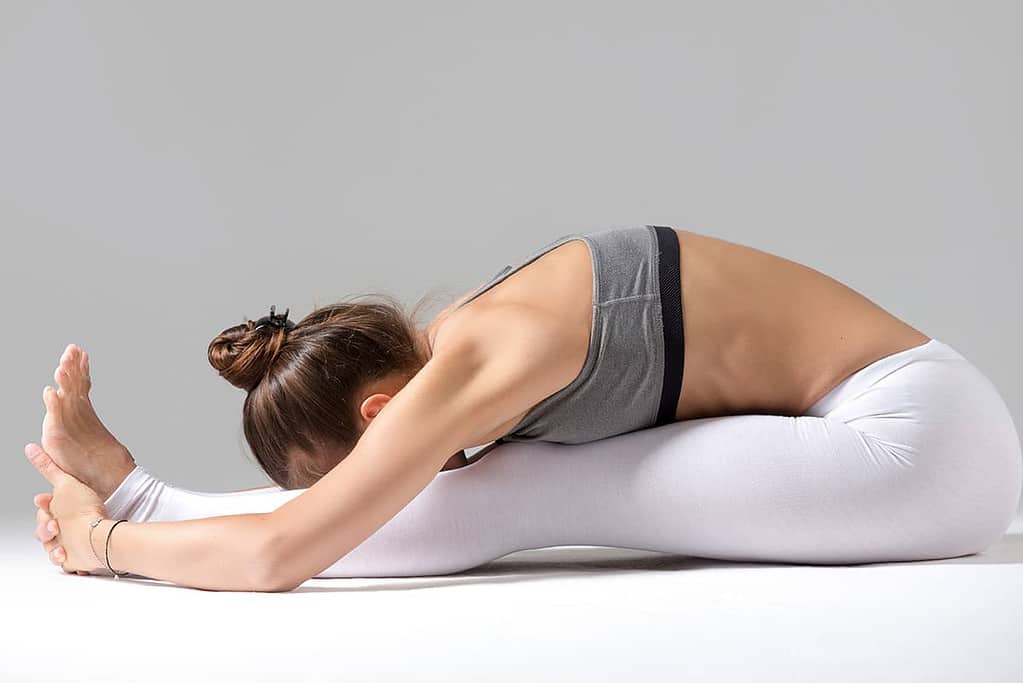
Paschimottanasana – From the employees pose place, fold ahead fold, grabbing the ft or huge toes to extend spinal flexion.
Purvottanasana – Open the entrance physique with an upward plank. Guarantee your fingertips are going through your ft and hips align together with your physique.
Ardha Baddha Padma Paschimottanasana – This half-bound lotus ahead fold is the seated model of the standing steadiness. Place the foot of the bent knee near the other groin and attain your arm behind your again to seize the toes earlier than folding ahead.
Trianga Mukhaikapada Paschimottanasana – On this ahead fold, the knee is bent and folded again, so the foot is to the skin of the sitting bone, with the only real going through up.
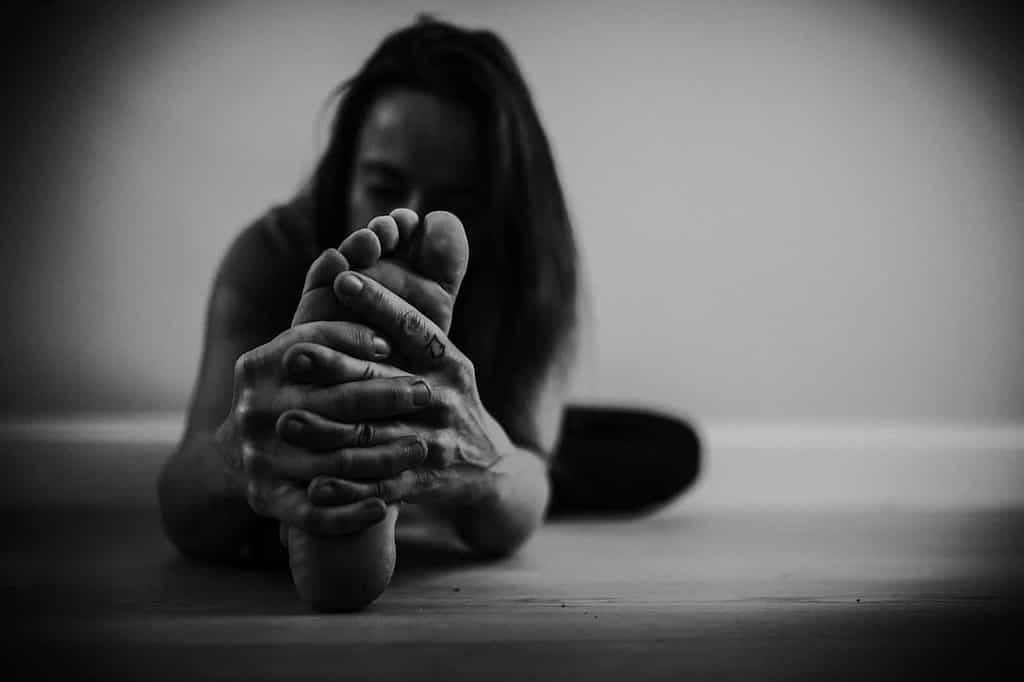
Janu Sirsasana A – Within the first variation of the head-to-knee ahead bends, place the only real of the foot in opposition to the interior thigh.
Janu Sirsasana B – Place the foot beneath the thigh within the second variation.
Janu Sirsasana C – Within the third variation, press the foot in opposition to the thigh with the toes going through down and the heel going through up.
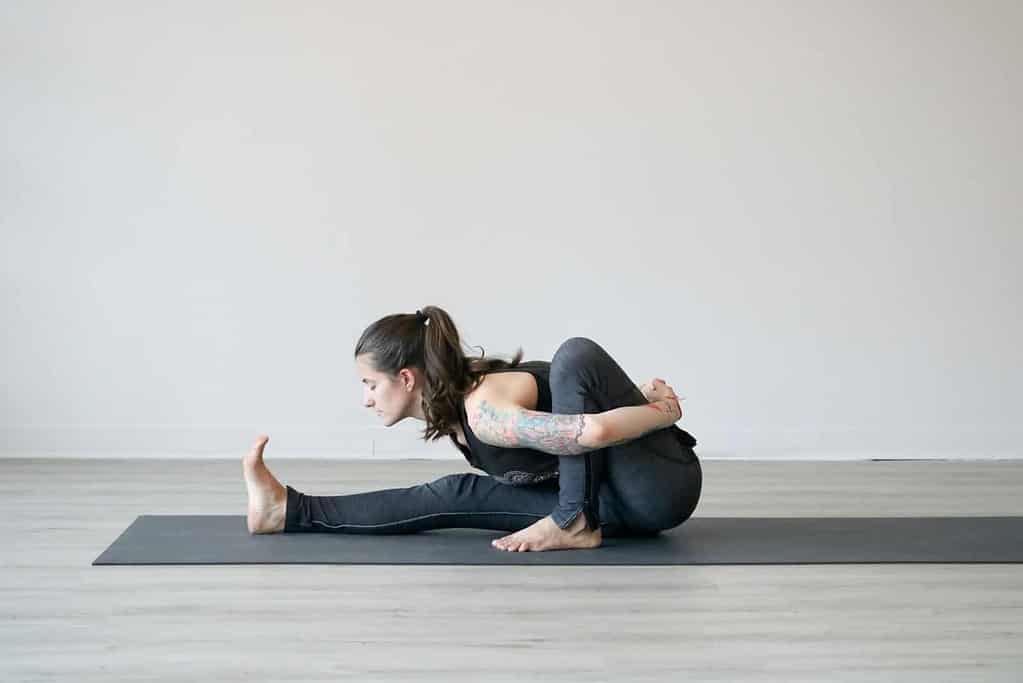
Marichyasana A – Within the first variation of Sage Twist Pose, bend one leg, inserting the foot as near the buttocks as attainable. With the knee pointing up, wrap your arm round it, reaching to your decrease again the place you bind with the opposite hand.
Marichyasana B – The beforehand straight leg is bent on this variation.
Marichyasana C – On this variation, one leg is straight, and the backbone twists in direction of the bent knee, with the arms certain behind the again.
Marichyasana D – Identical as above however with the opposite leg bent (foot tucked into the thigh).
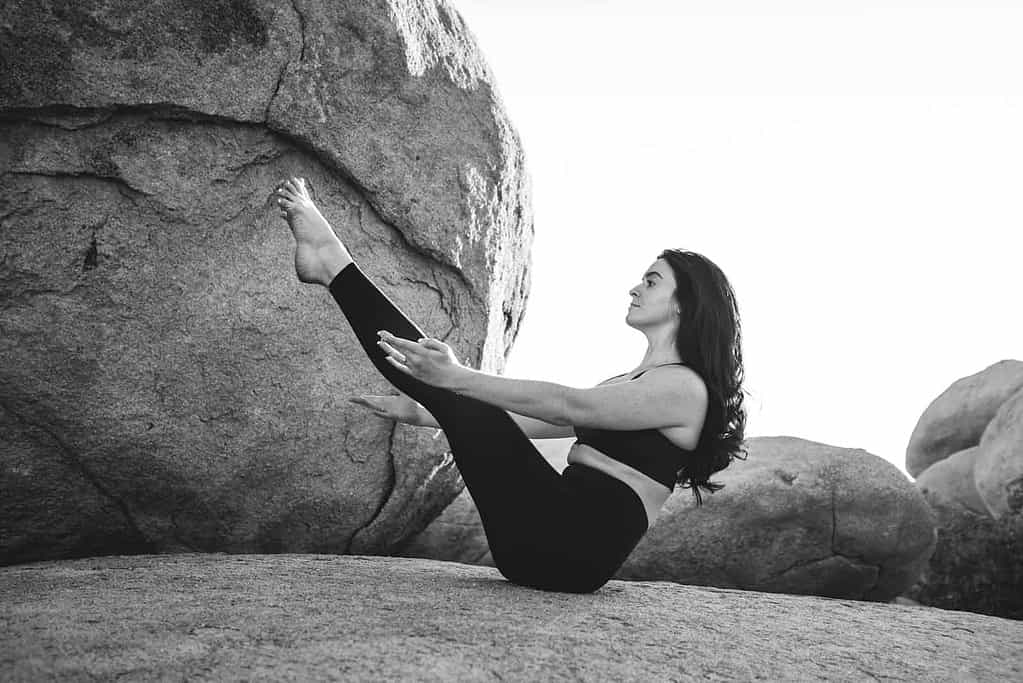
Navasana – Apply 5 rounds of boat pose with the legs straight. Guarantee your again doesn’t spherical and interact your belly muscle tissue and thighs.
Bhujapidasana – The arm strain pose is a difficult arm steadiness the place you elevate your hips off the bottom together with your legs crossed.
Kurmasana – Tortoise is likely one of the most troublesome poses to grasp on this sequence. The purpose is to fold ahead in a wide-leg place with arms and shoulders beneath the legs.
Supta Kurmasana – An much more intense variation of the Tortoise pose. Bbind your arms behind your again and cross your ankles over your head.
Garbha Pindasana – Also called the embryo within the womb, this pose includes balancing in your sitting bones whereas binding the legs and arms.
Kukkutasana – An arm steadiness with crossed legs certain across the arms.
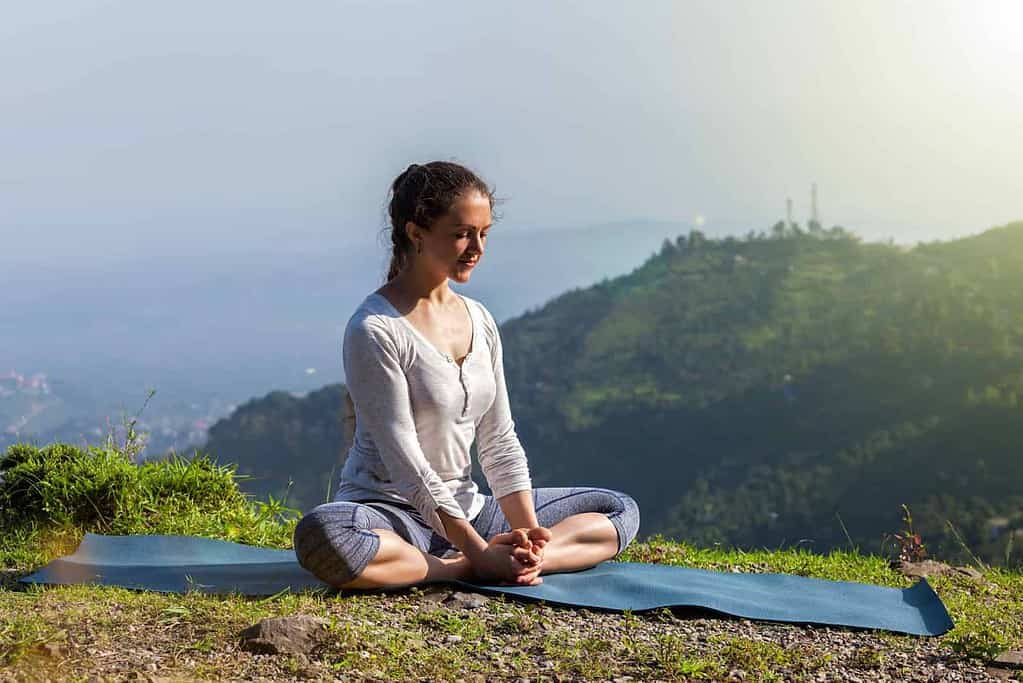
Baddha Konasana – Certain angle is a delicate hip opener to stretch the muscle tissue after the earlier postures. The soles of the ft are collectively, with the knees out to the facet.
Upavistha Konasana – Large angle seated ahead fold with the legs huge aside. Seize your huge toes or ft as you fold ahead.
Supta Konasana – A reclined model of the certain angle pose.
Supta Padangusthasana A – A reclined model of huge toe pose variation A. Preserve your backbone and shoulders on the bottom as you lengthen your leg and maintain the massive toe.
Supta Padangusthasana B – From the earlier place, open the leg to the facet for a hip stretch.
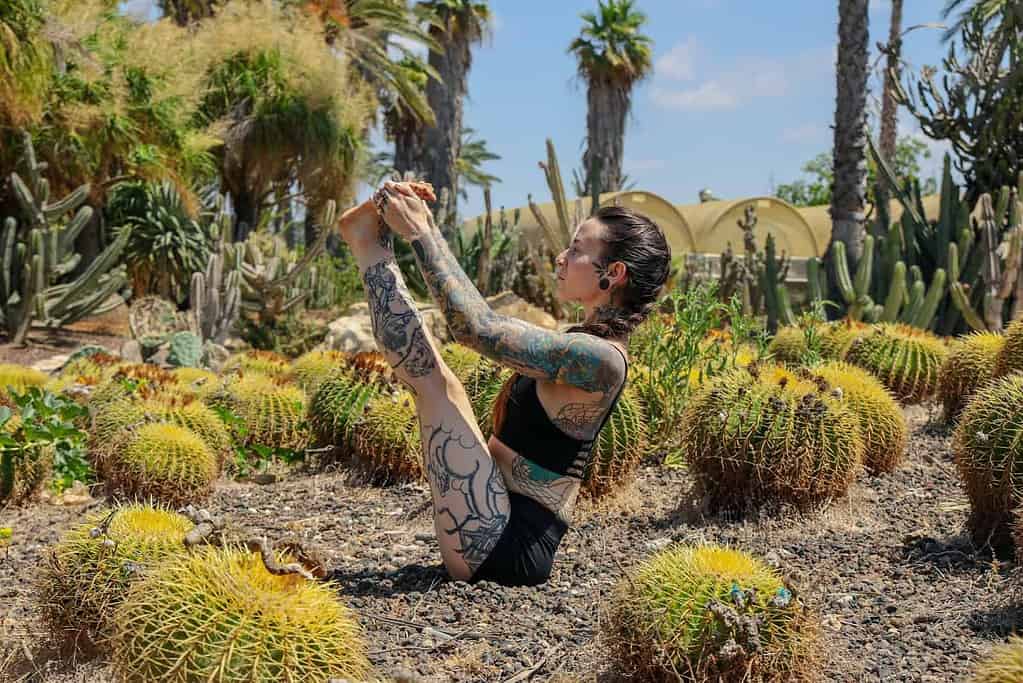
Ubhaya Padangusthasana – On this posture, seize each huge toes, lengthen your legs, and steadiness in your sitting bones with a straight backbone.
Urdhva Mukha Paschimottanasana – A deeper variation of the posture above. Pull the legs nearer to you, hugging the torso to the thighs and brow to the shins.
Setu Bandhasana – The traditional bridge pose, completed in a reclined place. With the ft near the sitting bones, elevate the hips excessive to increase the backbone.
Ending Sequence
The remaining yoga poses are referred to as the ending asanas.
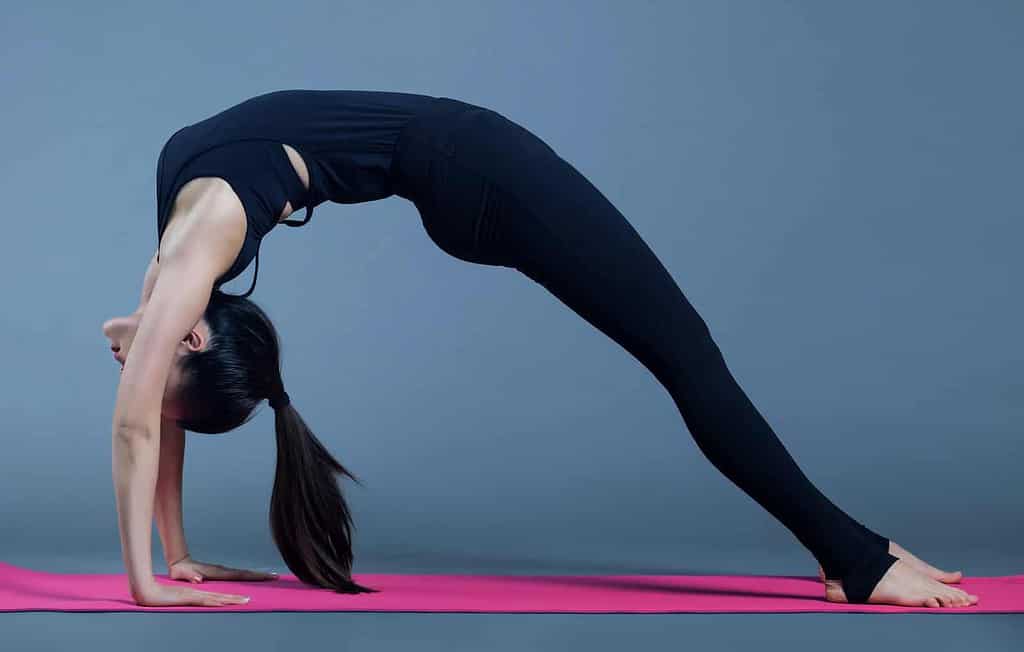
Urdhva Dhanurasana – The wheel pose is a deep backbend that opens the backbone, hips, and shoulders.
Paschimottanasana – Seated ahead bend practiced as a counterpose to the wheel.
Savasana – Take a quick relaxation in corpse pose.
Salamba Sarvangasana – In shoulder stand, hold your arms in your decrease again for assist as you lengthen the legs up.
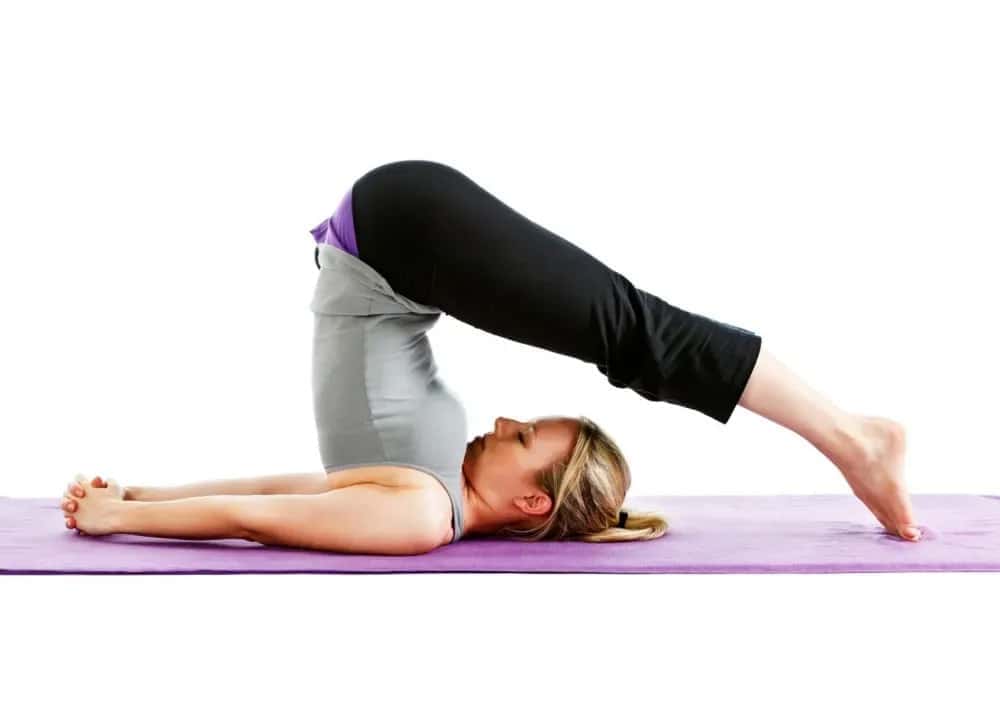
Halasana – From shoulder stand, decrease your legs overhead right into a plow pose, preserving them straight.
Karnapidasana – From the plow, bend the knees, hugging them to the ears for the ear strain pose.
Urdhva Padmasana – From the plow, cross the legs within the lotus place for the upward lotus pose.
Pindasana in Sarvangasana/embryo – Preserve the legs crossed as you hug them in direction of your ears from the earlier place.
Matsyasana – After these intense ahead folds, open the chest, torso, and neck with the fish pose.
Uttana Padasana – Conserving the place of the fish pose, increase the legs about 45 levels off the bottom with the legs collectively. As well as, lengthen the arms in entrance of you with the palms collectively.
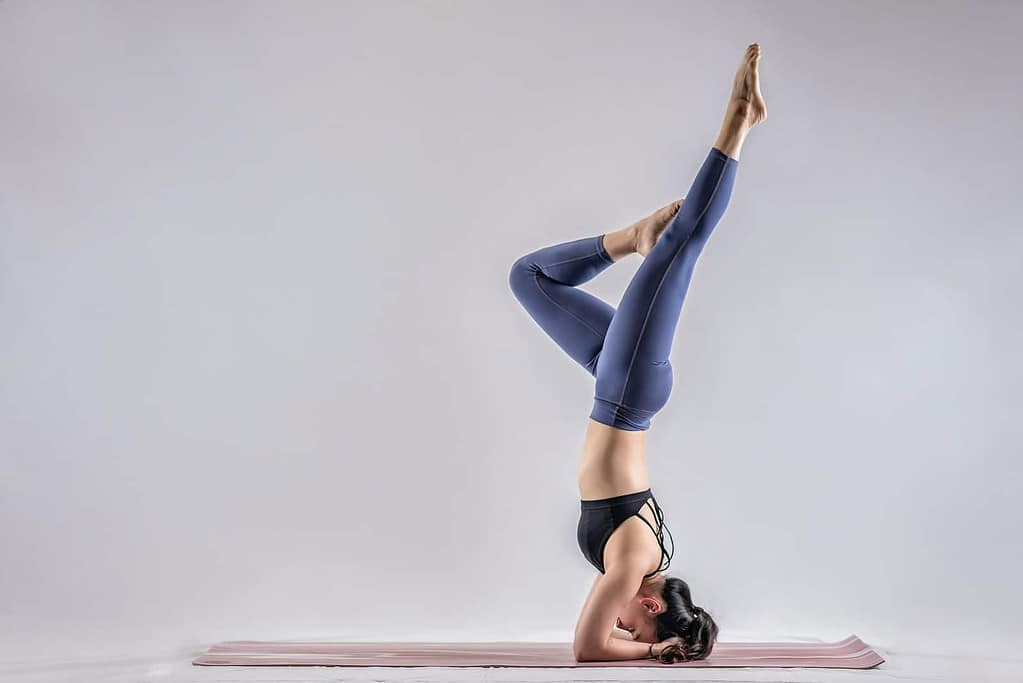
Sirsasana – Apply the supported headstand with the arms clasped across the again of the top and the forearms urgent into the bottom to take strain off the neck.
Balasana – Relaxation in a baby’s pose for five breaths.
Baddha Padmasana – Deliver the legs into lotus pose after which cross your arms behind you, grabbing the other huge toes.
Padmasana – Traditional lotus pose with the arms resting on the knees in Gyan (meditation) mudra.
Tolasana – For the ultimate pose, hold the legs within the lotus pose, place the arms by your sides, and press into the bottom to elevate the hips and legs.
Savasana – Lastly, take a well-deserved relaxation in corpse pose!
Ideas For Studying Ashtanga Yoga Poses
As you may see, the Ashtanga yoga major sequence is fairly lengthy. So for those who’re new to this apply, it’s pure to really feel overwhelmed and confused.
One of the simplest ways to study any sequence of Ashtanga yoga is beneath the steering of an skilled and authorized Ashtanga yoga instructor. So I like to recommend in search of out Ashtanga yoga courses close to you.
Nonetheless, as Ashtanga yoga is supposed to be an (virtually) each day apply, it’s good to start out working towards the yoga poses at residence too. You should use varied assets to study the order and alignment of the Ashtanga yoga poses.
Books
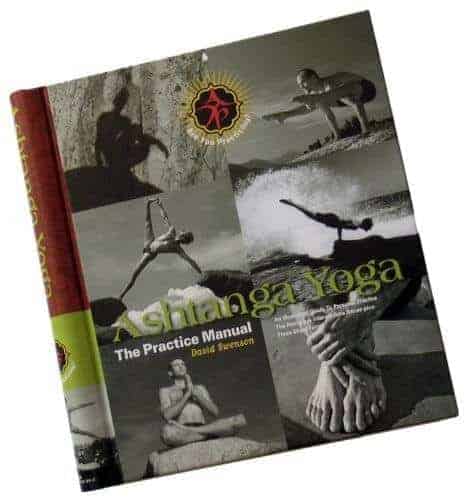
Ashtanga Yoga: The Apply Guide by David Swenson is a must have for any aspiring “Ashtangi.” It offers probably the most thorough breakdown of the first and intermediate sequence, with massive colourful photos of every posture.
This useful information additionally exhibits variations you are able to do for a few of the tougher asanas and offers three different brief types of every sequence. I discover these tremendous useful for the times I don’t have time to do a full Ashtanga apply.
Posters
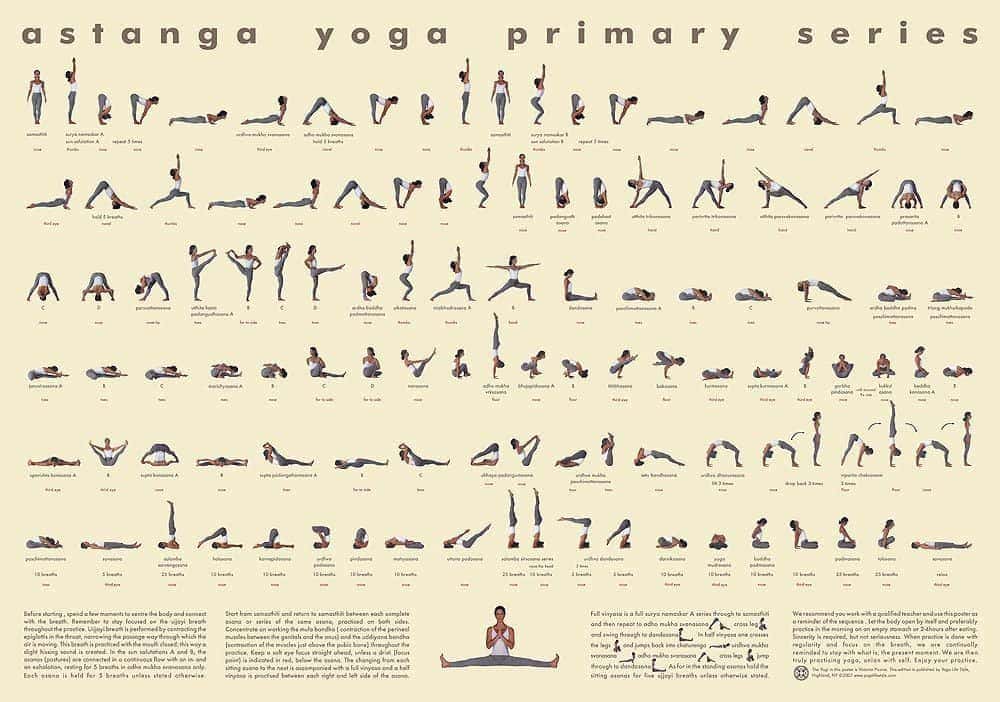
In the event you hold forgetting what pose is subsequent when doing all of your yoga apply, you would possibly discover having a poster of the poses useful. For instance, I’ve this Ashtanga Main Sequence Poster on my wall straight in entrance of my yoga mat, so if I get caught, I shortly search for and get straight again on monitor.
The 20″ x 28″ poster exhibits photos for all 112 postures within the major sequence, together with a breakdown of the solar salutations. It’s probably the most complete and easy-to-follow poster I’ve discovered, as the pictures are massive and clear, and the design is easy and non-distracting.
Flash Playing cards
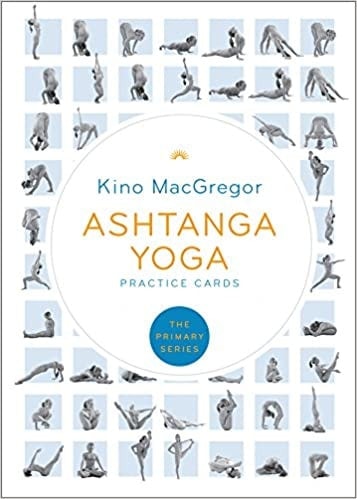
One other cool approach to study and keep in mind every yoga pose is with flashcards, just like the Ashtanga Yoga Apply Playing cards by Kino MacGregor. On this deck, you’ll discover a card for every yoga pose within the major sequence, that includes a full-color picture, directions, the Drishti (level of focus), and an inventory of advantages.
I discover these playing cards make my yoga apply enjoyable, and for those who’re a visible learner, you’ll decide up the sequence a lot quicker. The thought is to put all of them out so as and do your apply, utilizing them as a information, like with a poster.
On-line Movies
After all, many on-line assets can assist you study the sequence and alignment of the Ashtanga yoga poses. You’ll discover many Youtube movies that information you thru the first sequence, corresponding to this one by La Yoga Vita. Additionally, you will discover shorter sequence variations for rookies, like this one by David and Jelena Yoga.
Ultimate Ideas On Ashtanga Yoga Poses
Whereas there are a lot of Ashtanga yoga poses to study (together with some difficult ones), Ashtanga is an satisfying and rewarding apply. As you repeat the identical asanas every single day, you’ll shortly discover your physique turning into stronger and extra versatile, and thus, the postures will slowly change into extra achievable.

